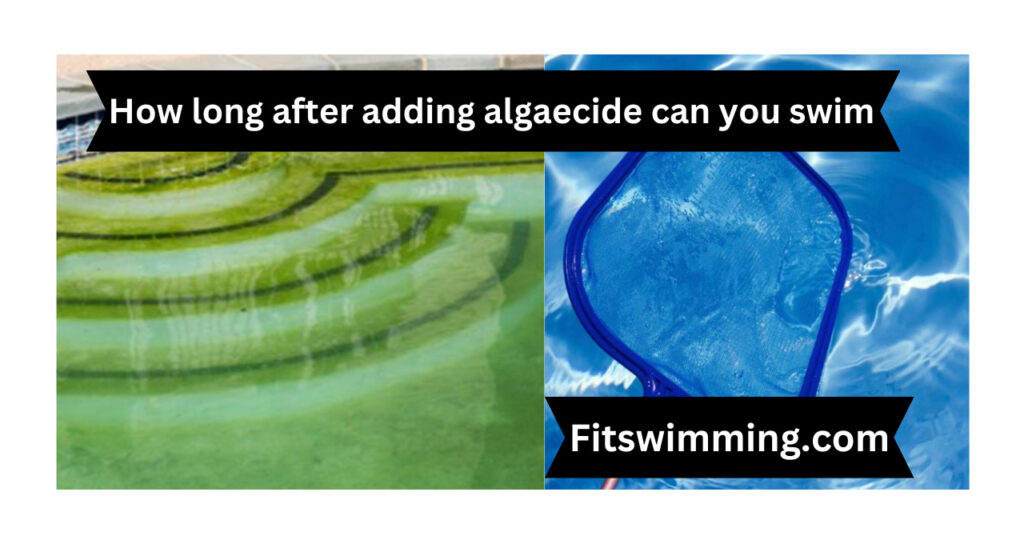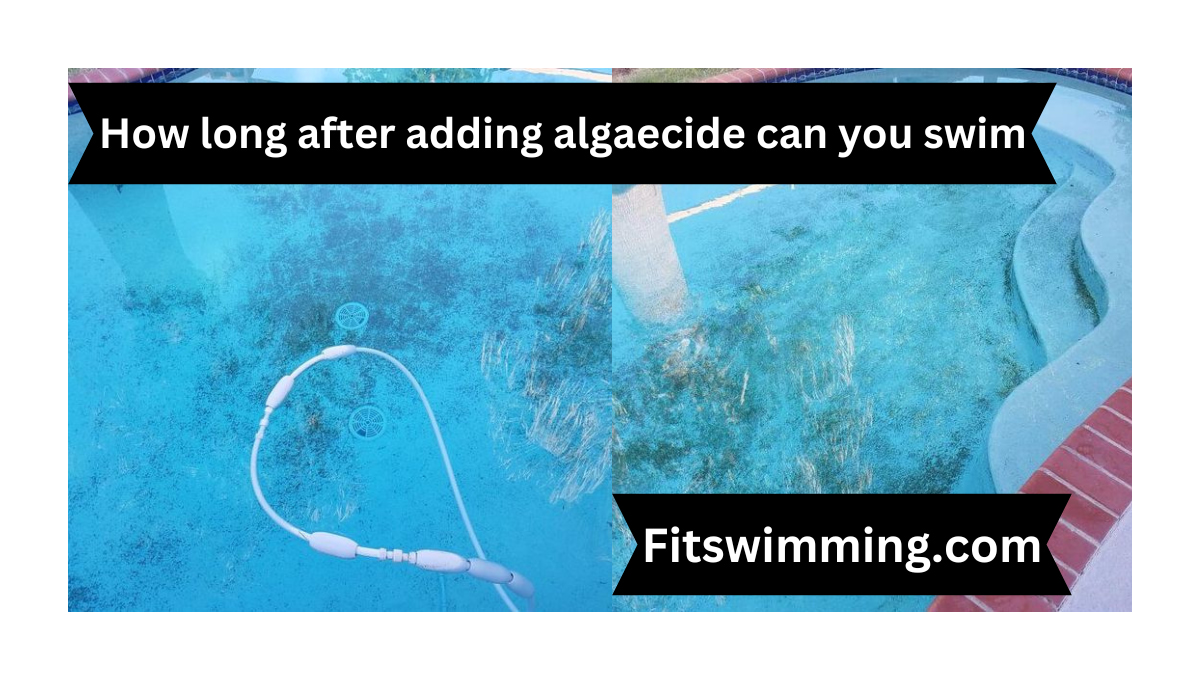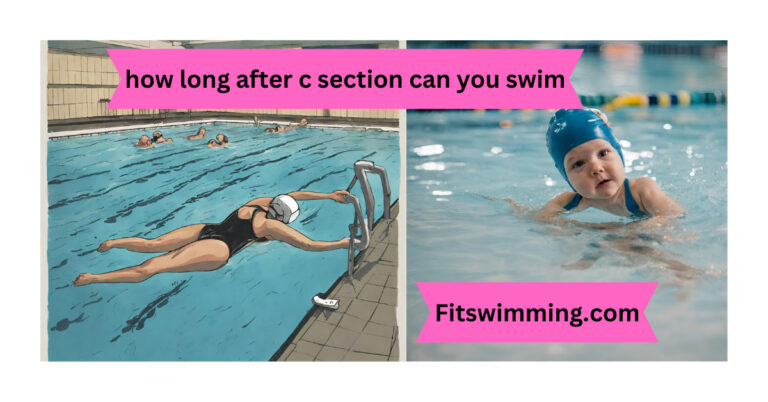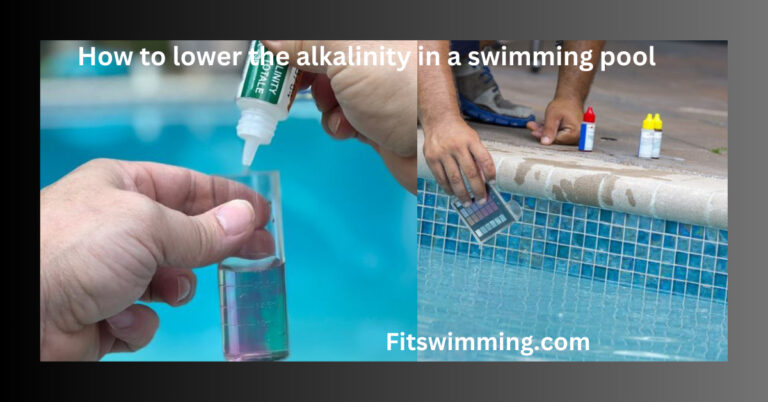How Long After Adding Algaecide Can You Swim? A Guide
Are you not sure when and how long after adding algaecide can you swim? If you’re unsure, you’ve got a good reason to read this article. We’re going to tell you about a way to use pool shock and algaecide together, so your pool stays clean and you can swim in it sooner. In this article, we will discuss what is algaecide its types, and whether it is safe to swim or not.
What is Algaecide
Algaecide is like a superhero for your swimming pool. It’s a special liquid that you pour into your pool water to stop something called “algae” from taking over. Algae are those green, slimy things that can make your pool look yucky. Algaecide works by messing up the algae’s ability to grow and spread. It’s like a shield that protects your pool from getting all cloudy and gross. So, when you use Algaecide, you’re making sure your pool stays clear and inviting for a fun swim!

How Long After Adding Algaecide Can You Swim
After adding algaecide to your pool, it’s generally recommended to wait around 15 to 30 minutes before swimming. This allows the algaecide to mix evenly with the pool water and do its job effectively. However, the specific wait time can depend on factors like the type of algaecide used, its concentration, pool size, water temperature, and weather conditions.
It’s always a good idea to follow the manufacturer’s instructions on the algaecide label, as they may provide specific guidance on when it’s safe to swim after application. Ensuring your safety and the effectiveness of the treatment is important, so a little patience can go a long way in maintaining a clean and enjoyable swimming pool. Below are the types of swimming pool algae.
Types of Swimming Pool Algae
There are three major types of swimming pool algae.
Green Algae: Green algae are like the usual problems you find in pools all the time. They turn your water green and can make the walls and floor feel slimy. But don’t worry, they’re the easiest to get rid of.
Yellow (Mustard) Algae: Yellow algae are a bit sneaky. They usually start as tiny spots and can make your pool look kind of mustardy. They like to stick around in shady spots, so you need to be extra careful to get rid of them.
Black Algae: Black algae are the toughest of the bunch. They form small, dark patches that cling to pool surfaces like stubborn stains. They have strong roots, so you’ll need special treatment to get rid of them.
Is it Safe to Swim in a Pool With Too Much Algaecide?
Swimming in a pool with too much algaecide is not safe. Algaecide is like a superhero for your pool, but too much of it can be a problem. It can make the water not good for swimming, and it might even cause skin or eye irritation. So, it’s essential to follow the instructions on the algaecide bottle carefully. If you accidentally put too much in your pool, it’s best to wait until the water is safe again before swimming. Always make sure your pool water is just right for a fun and safe swim!
How Much Algaecides Should You Use
It’s important to use the correct amount of algaecide in your pool to make sure it stays clean and safe. To figure out how much to use, follow the instructions on the algaecide bottle. They usually tell you how many ounces or cups to add based on your pool’s size. It’s like following a recipe for cooking – just measure it out as the instructions say. Using too much algaecide can be a problem, so don’t go overboard. If you’re not sure, it’s a good idea to ask a pool expert or someone who knows about pools to help you get the right amount. That way, your pool will stay in tip-top shape!
Does Algaecide Make Pool Cloudy
Algaecide itself typically doesn’t make a pool cloudy. In fact, algaecide is used to help prevent and clear up cloudiness in a pool caused by the growth of algae. However, if you have a severe algae problem in your pool, the process of killing and removing the algae can temporarily make the water cloudy. This cloudiness is usually a sign that the algaeecide is doing its job by breaking down the algae.
To clear up the cloudiness, it’s important to continue running your pool filter and pump to help remove the dead algae particles. Additionally, you may need to use a pool clarifier or flocculants to help the filter catch and remove the fine debris. Once the algae are fully eliminated and the water is balanced, your pool should become clear again.
Will Algaecide Clear a Green Pool
Algaecide can be a helpful tool in clearing a green pool, but it’s usually not a standalone solution for severe algae infestations. If your pool has turned green due to algae growth, you’ll typically need to follow a multi-step process to clear it up:
Shock Treatment: Begin by giving your pool a strong dose of chlorine, which is like a super cleaning. This will get rid of a big part of the algae and bacteria in the water.
Algaecide Treatment: After shocking the pool, you can add an algaecide to help prevent further algae growth and aid in eliminating any remaining algae.
Scrubbing and Vacuuming: You’ll need to manually scrub the pool walls and floor to dislodge the algae, and then vacuum it out of the pool.
Filtration: Keep your pool filter running all the time to help get rid of dead algae and stuff that doesn’t belong in the water.
Water Testing and Balancing: Test your pool water often and change the pH and chlorine levels as required to keep a balanced environment that makes it hard for algae to grow again.
Patience: Clearing a green pool can take some time, especially if the algae infestation is severe. Stay patient and keep up with taking care of your pool regularly. Following are some questions we should clear first.
Should I Run My Pool Pump After Adding Algaecide
Yes, it’s a good idea to run your pool pump after adding algaecide. Running the pump helps to circulate the pool water, which, in turn, helps distribute the algaecide evenly throughout the pool. Adding algaecide to your pool is essential for maintaining clear water, especially if you have a nearby pond. This ensures that the algaecide can do its job effectively by reaching all areas of the pool where algae might be present. So, after adding algaecide, turn on your pool pump and let it run for a while to help the algaecide mix well and keep your pool clean and clear.
Can I Add Shock and Chlorine at the Same Time
Yes, you can add shock and chlorine to your pool at the same time, but it’s important to do it correctly. You see, shock is a way to give your pool a super boost of chlorine, which helps to kill bacteria and algae. So when you add shock, you’re actually adding chlorine too.
Here’s how you can do it:
First, make sure you know the right amount of shock to use based on your pool’s size. You can see this information on the label of the shock product.
Next, fill a bucket with some pool water. It’s important to use a bucket, not just pour shock directly into the pool.
Add the right amount of shock to the bucket of pool water and stir it well until it’s all dissolved.
Finally, slowly pour the mixture back into the pool while the pool pump and filter are running. This helps distribute the chlorine evenly.
Conclusion: How Long After Adding Algaecide Can You Swim? A Guide
Waiting after adding algaecide before taking a swim is all about ensuring your safety and the effectiveness of the treatment. While the general waiting time is around 15-30 minutes, it’s essential to consider the factors mentioned above and follow the manufacturer’s instructions on the algaecide label.
FAQ’s
The time it takes for Algaecide to work can vary, but it typically starts working within a few hours to a day after application.
You can add algaecide at any time of the day that is convenient for you.
It usually takes algaecide a few days to a week to clear the water in your pool. The exact time can vary based on factors like the type of algaecide used and the severity of the algae problem.
No, algaecide does not work better than chlorine. They have different roles. Chlorine is essential for killing bacteria and sanitizing pool water, while algaecide is used to prevent and control algae growth. Both are important for maintaining a clean and safe pool.







